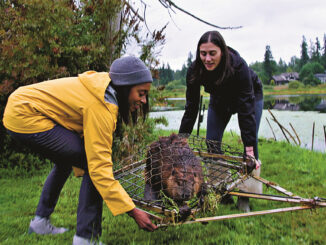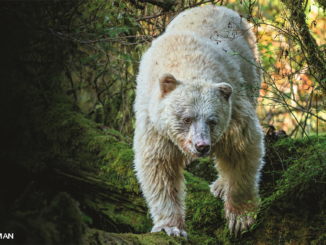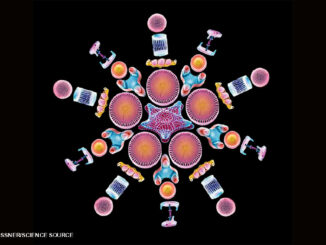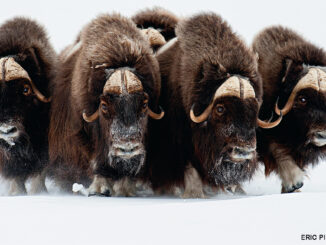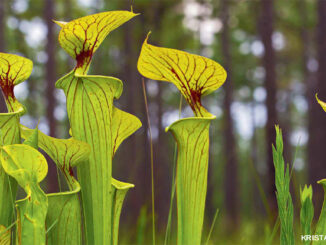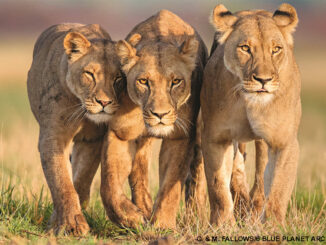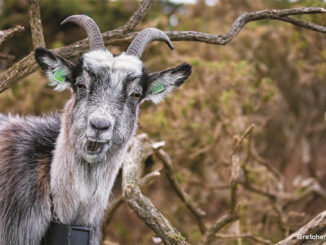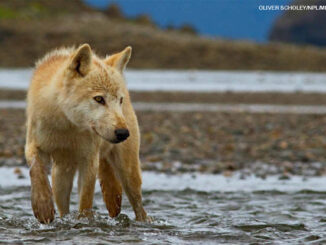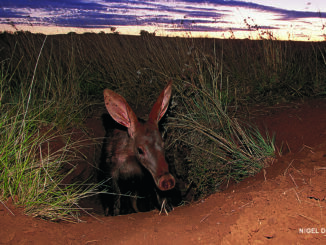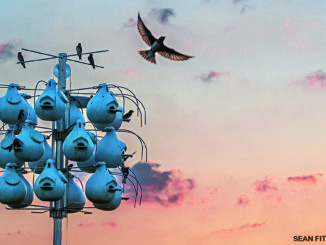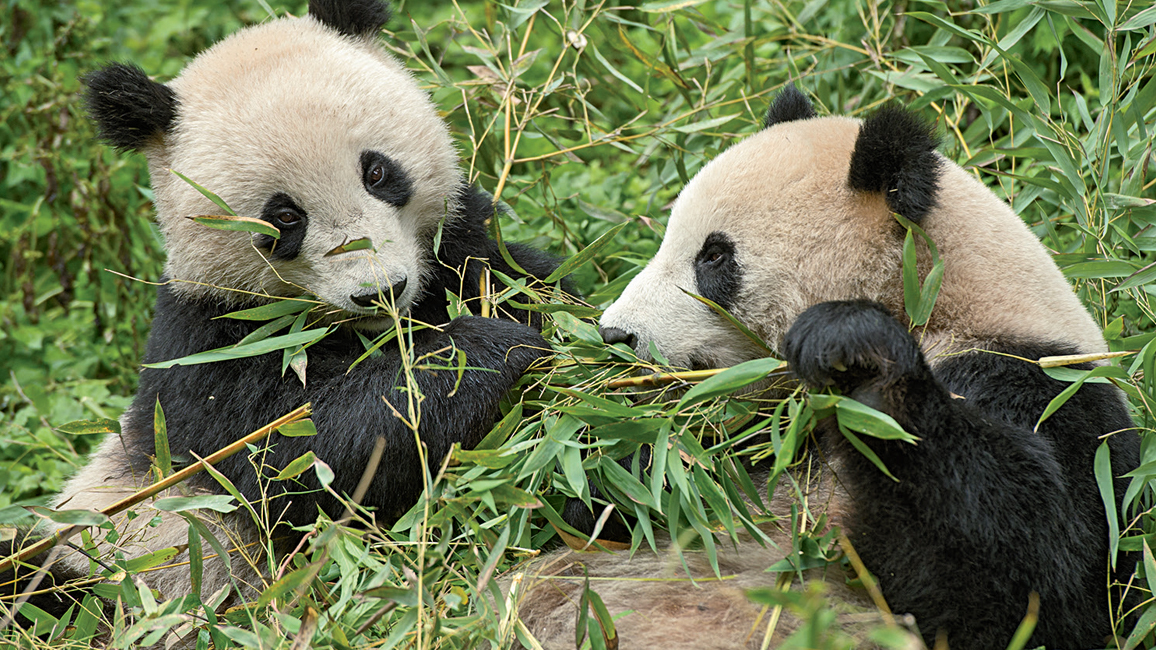
Panda Quake
By Hannah Schardt; photos by Katherine FengEight years ago, an earthquake nearly wrecked China’s most famous panda research center. But now the surviving pandas—and the people who care for them—are back on steady ground.

The crumpled shell of a building in the photo above was once a home. But not a home for people—a home for giant pandas. The building was part of a research center in Wolong (WOH-long) National Nature Reserve, China’s oldest, largest safe place for pandas. Scientists there helped the pandas raise babies—a big deal when there weren’t many pandas left in the wild. But in 2008, a huge earthquake destroyed much of the research center. Piles of rock from the nearby mountainside rained down on Wolong, as seen in the photo above.

BEFORE THE QUAKE
From 1980 until the earthquake, the Wolong research center was home to dozens of giant pandas. The center was founded by people who wanted to study the black-and-white bears and figure out the best ways to protect them. The pandas were in danger of disappearing completely. People were building homes and farms too close to the mountain forests where the shy bears lived.
Making matters worse, wild panda moms don’t have many babies—usually only one every few years. So scientists started trying to breed pandas at the research center. They quickly discovered that captive pandas often aren’t very good at taking care of their babies. So they started teaching female pandas how to be better moms. They even let the panda moms watch videos on proper baby care! Soon the moms got better at raising their cubs. But the pandas raised at the center were usually kept there or sent to other research centers or zoos around the world. They were too comfortable around people to live wild in the forest.
EARTHQUAKE
The 2008 earthquake was one of the worst ever recorded. Thousands of people died, and many thousands more lost their homes. At the Wolong research center, one panda died, and another was never found. Keepers pulled one cub to safety just seconds before boulders rolled down and smashed its shelter. A few of the surviving pandas were able to stay in the buildings that weren’t destroyed. But many of them were moved to other research centers in the area.
MEET THE PHOTOGRAPHER
Katherine Feng, who took all the photos for this story, is a veterinarian. But now she spends most of her time photographing China’s endangered animals. Years before the earthquake, she started visiting the research center as often as she could to photograph the pandas. She also brought veterinary supplies that keepers and researchers needed to care for the bears.
Soon after the earthquake, Katherine arrived at Wolong with her camera—and lots of supplies for the pandas. There were no safe buildings to sleep in, no running water, and no electricity. For two weeks, she camped out in that tiny tent. Since then, she has returned to Wolong many times to tell the pandas’ stories with photos.

STARTING OVER
Today, a brand-new research center within the Wolong reserve is being built 20 miles from the old one. The old center is closed to the public, but scientists and keepers are still working there in the buildings that remain. These days, they have a new goal: getting pandas ready to go back into the wild.
Young bears that may one day be released must not get comfortable being around people. So now keepers wear specially made “panda suits” whenever they are feeding or caring for the pandas. Cubs might not be fooled into thinking these tall, furless, black-and-white “creatures” are really pandas. But at least they probably don’t think they are people!
Scientists at Wolong carefully study the cubs. They stay out of the way, watching the pandas on video screens and listening to sounds recorded on the cubs’ special collars. The sounds tell the scientists how often a cub eats and how it “talks” with its mom.
Once the cubs are a little older, the scientists decide which ones are “wild” enough to safely go back to the forest. The bears must be able to feed themselves, protect themselves, and get along with other wild pandas. So far, two pandas have been successfully released into the forest. More are getting close. And that’s earth-shakingly good news!
VIDEO: Watch giant pandas eat bamboo!


